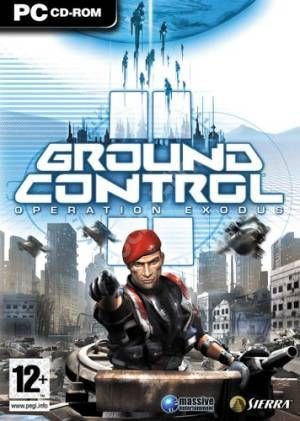Most Real Time Strategy games work the same tried and trusted formula, you build a base and harvest or mine the local crops. Once you got the revenue stream you start building men, then machines and then you attack. The original Ground Control from 2000 threw this belief out of the window from the start and for that reason it was one of the best RTS games to come along in a long time. 100,000+ copies later, the sequel is now on our desktops for inspection.
Our quick take
There is no doubt about it, this game is great. Not only does it bring new elements to the RTS genre, it builds on elements already there. The game’s AI is strong enough to present a challenge and the lack of base and harvest management is wonderfully refreshing. Just one word of warning - remember to book some time off to enjoy it properly rather than fainting that fake illness from Tibet, and patch it before you play as the first update wiped those all-important savegames.

Ground Control 2 - 4.5 / 5
| FOR | AGAINST |
|---|---|
|
|
The emphasis, rather than base building or relying on a handful of troops, is all about dropships and making sure you have a Landing Zone (LZ) to bring in more firepower. Because the landing zone is something that can only really be guarded by men and machines rather than walls and gun turrets throughout the game there is a belief that you should never stretch yourself too thinly otherwise you’ll lose your ability to bring in reinforcements from your precious LZ. The interest builds in multiplayer when you can easily capture your opponent’s LZ and start shipping in reinforcements via their LZ.
Dropships are paid for by earning fighting points and this too encourages the get out and fire motif rather than the “sit back and building up the armies” angle. It’s a great way of getting the game moving along, don’t fight the enemy and you won’t get any points, don’t get any points and you can’t get more men, can’t get more men and you won’t have enough troops to win the day.
Aside from not needing to harvest troops the game is very in depth and takes in to account a number of different elements. Troops for example can take advantage of buildings for extra cover and an elevated firing position. Elevated troops as in real life are more prone to come out better in a battle than troops having to hold a downward position and the game takes this into account. Likewise forest coverage and the size of vehicles all have an effect on the strength of your engaging forces and for the first time in a science fiction RTS you start to actually pay attention to the terrain you are fighting on, using buildings and hilltops rather than taking the shortest route to victory.
The Single player mode offers the usual array of skirmishes and campaigns and you can choose between two races - alien and human to get you going. Both are well managed with the level getting progressively harder as you work your way through the missions, however the opening levels are no walkover. You need speed and the ability to multitask if you are to work your way up the ranks and the level has a good way of making sure you adhere to that- the enemy AI constantly throws sorties your way.
Graphics are impressive and the rotating camera really allows you to get a glimpse of the awe-inspiring scenery, that is, if you have time away from the ensuing battles. In fact our only complaint on the graphics is that so detailed is the terrain that sometimes it’s hard to locate your men without zooming in.
Multiplayer on the other hand involves support for LAN and internet play. One of the nicer elements however and again something that reflects the lack of bases in the game is that player can join any game at any time as for the most part the playing field always stays level. This again brings in a whole new dimension to the multiplayer arena as more challengers can step in just when you think you are victorious.
To recap
This will become the benchmark for RTS’s for years to come
